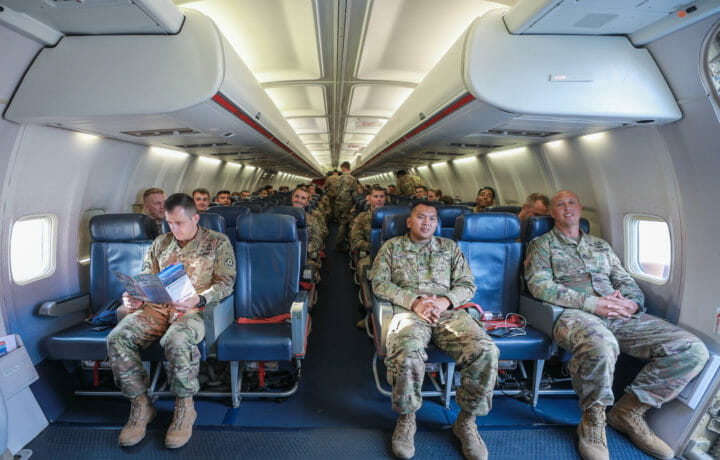While many Americans choose not to travel in light of the coronavirus, many Department of Defense employees now no longer have a choice: The Pentagon enacted across-the-board travel restrictions this week, ordering all its personnel—civilian and military alike—not to travel for business at any time between March 16 and May 11. And it’s ordering its active-duty military personnel not to leave their immediate areas at all during that time frame.
These measures are a DoD-wide effort to ensure that defense employees and military servicemembers don’t unintentionally spread the virus to their families or to each other, according to a DoD press release. The release said that defense leaders intend “to protect our personnel and their families” and to “help limit COVID-19’s spread and its impact on the force.”
The Specifics of the travel ban
The restrictions came forth Friday, March 13, in a memorandum signed by Deputy Defense Secretary David Norquist. This document’s instructions are straightforward and stark: “All DOD military personnel will stop movement while this memorandum is in effect,” it states.
Specifically, service members are prohibited from going anywhere more than 100 miles from where they live—they may take “local leave only.” Are you a service member with family in another state that you want to visit? It’s going to have to wait until May 11.
The new rules also put a halt on any transferring from one base to another, going on any temporary duty travel, or deploying to a new mission anywhere, no matter whether it’s in-country or overseas.
Exceptions to any of the above may be granted for travel to get medical care, or something “humanitarian” or “mission essential”. But anyone claiming one of these exceptions will need to clear it with their higher command.
And that’s not all. Service members returning from any of a list of “Level 3” countries will have to self-isolate for 14 days before they can return to work. These are countries that Pentagon officials have designated to be high-risk areas for getting the coronavirus. China, Iran, and South Korea are on this list, as is much of Europe: Austria, Belgium, the Czech Republic, Denmark, Estonia, Finland, France, Germany, Greece, Hungary, Iceland, Italy, Latvia, Liechtenstein, Lithuania, Luxembourg, Malta, the Netherlands, Norway, Poland, Portugal, Slovakia, Slovenia, Spain, Sweden, Switzerland, Monaco, San Marino, and Vatican City.
What About Civilians?
DoD civilian employees aren’t quite as restricted. If they want to take a road trip out of town or a plane trip out of the country, they still can. As long as they do so on their own time: That same memorandum prohibits DoD civilians from any work-related trips. All “government-funded” travel is off the table, according to the memorandum.
And there is to be no travel—business or personal—to any Level 3 countries.
There’s no relocating to start a new job, either. Until May 11, DoD agencies and military bases will only be allowed to on-board new civilian employees from the “local commuting area.” Got a job offer at a military base in another state? You’ll have to wait until May 11 to start.
DoD is going farther than most government agencies in curbing employee freedom of movement. But it’s not hard to see why. We know that the coronavirus spreads easily from person to person. We also know this: DoD has more than 1.4 million people (military and civilian employees included) in its workforce. That’s a lot of people, which means a lot of potential viral transmissions. Preventing more than a million people from traveling as much as they might like is a way to deny the virus an enormous number of opportunities to pass from one person to more people. The memorandum acknowledges this accordingly:
“The continuing spread of the 2019 Novel Coronavirus (COVID-19) necessitates immediate implementation of travel restrictions,” the memorandum states. “These restrictions are necessary to preserve force readiness, limit the continuing spread of the virus, and preserve the health and welfare of Service members, DOD civilian employees, their families, and the local communities in which we live.”
Playing Defense
U.S. troops train intensively to go on the attack against hostile forces that threaten U.S. security. But the coronavirus is a different breed of enemy. Attacking it isn’t yet an option—i.e., there’s no viable vaccine or cure that we could strike it with. While medical researchers work on some such remedy, the U.S. military must instead go on the defense. Its massive workforce is hunkering down and staying put. It’s the best that they—and any of us, really—can do, while we wait for the infections to halt and for normalcy to return.




